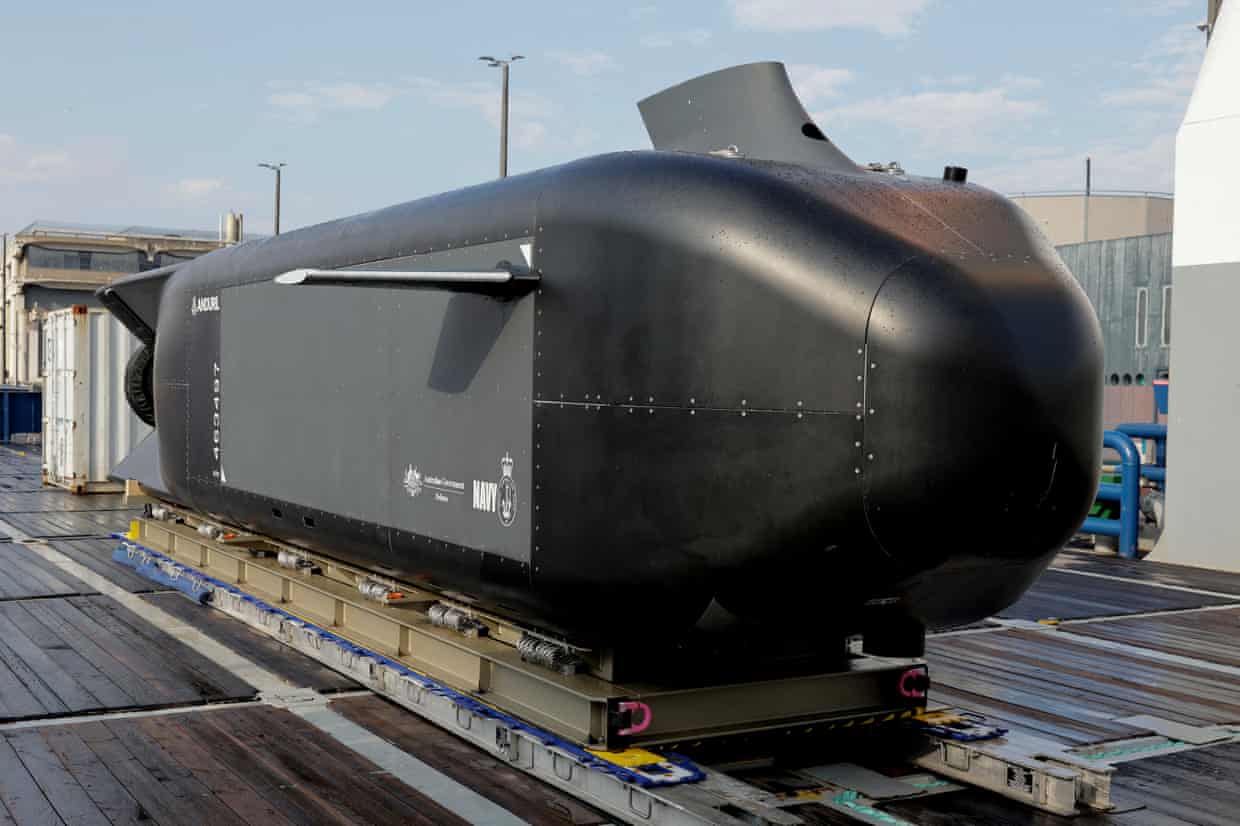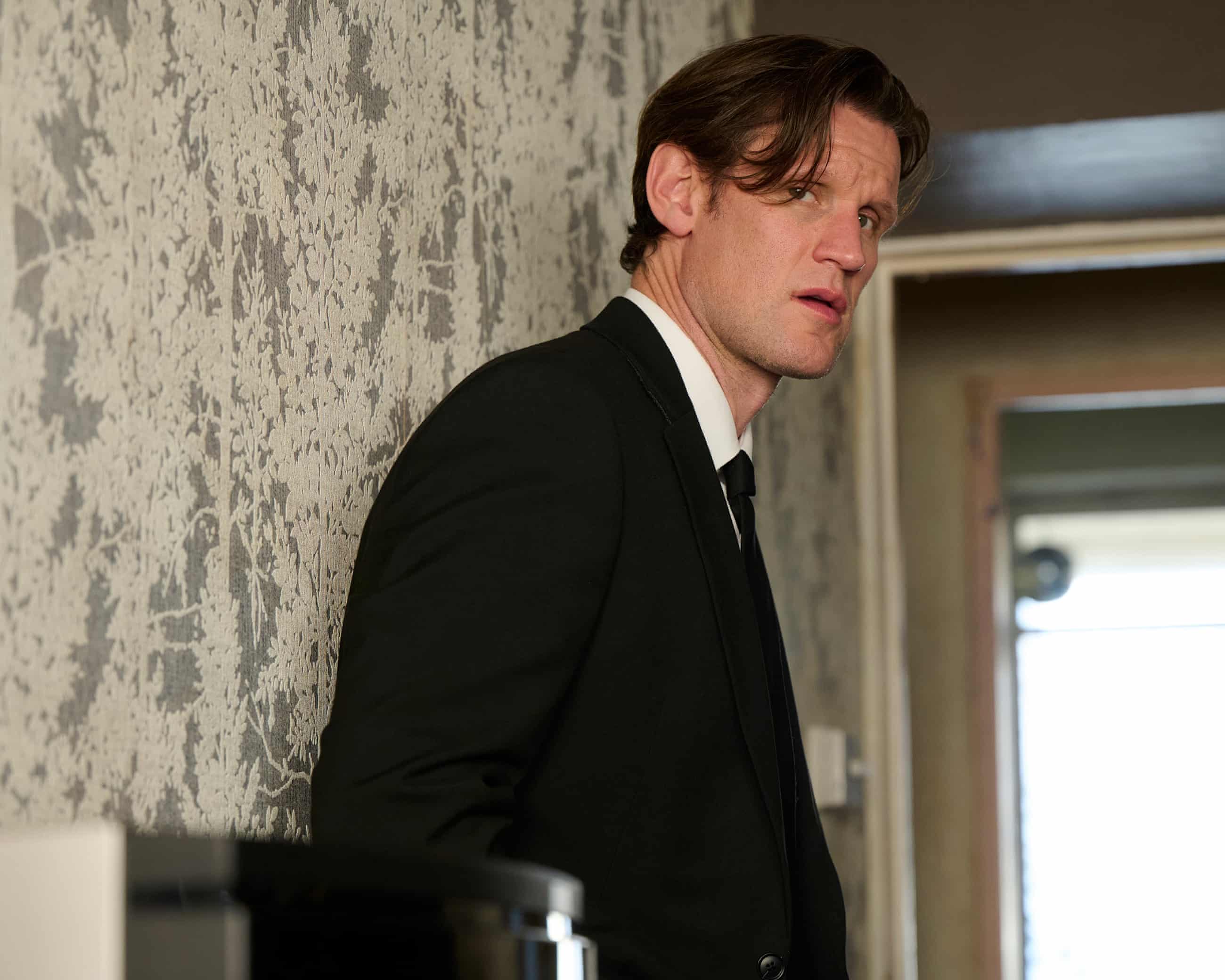‘A step-change’: tech firms battle for undersea dominance with submarine drones

Flying drones used during the Ukraine war have changed land battle tactics for ever.Now the same thing appears to be happening under the sea.Navies around the world are racing to add autonomous submarines.The UK’s Royal Navy is planning a fleet of underwater uncrewed vehicles (UUVs) which will, for the first time, take a leading role in tracking submarines and protecting undersea cables and pipelines.Australia has committed to spending $1.
7bn (£1.3bn) on “Ghost Shark” submarines to counter Chinese submarines.The huge US Navy is spending billions on several UUV projects, including one already in use that can be launched from nuclear submarines.Autonomous uncrewed submarines represent “a genuine step-change in the underwater battle space”, said Scott Jamieson, the managing director for maritime and land defence solutions at BAE Systems, Britain’s dominant weapons company and builder of its nuclear submarines.The new drones under development would allow navies to “scale up in ways that just weren’t available before”, at “a fraction of the cost of manned submarines”, he said.
The opportunity of a huge new market is pitting big, experienced defence companies, including BAE Systems and the US’s General Dynamics and Boeing against weapons tech startups such as the American firm Anduril – the maker of the Ghost Shark – and Germany’s Helsing.The startups claim they can move faster and cheaper.The struggle for undersea dominance has been almost constant in peacetime and war for most of the last century.The first nuclear-powered submarine (the US’s Nautilus, named after Jules Verne’s fictional vessel) was launched in 1954, and nuclear-armed vessels are now the centrepiece of the armed forces of six countries – the US, Russia, the UK, France, China and India – while North Korea may have recently become a seventh.That is despite deep controversy over whether the weapons represent value for huge sums of money, and whether such a destructive arsenal truly acts as a useful deterrent.
Those armed forces are playing a constant game of hide and seek on the oceans.In order to avoid detection, the submarines rarely surface: maintenance problems on other vessels recently forced some British submariners to spend a record nine months underwater, carrying Trident nuclear missiles that are theoretically ready to strike at any time.Tracking Russia’s underwater nuclear arsenal – which has become quieter in recent years – is a key focus of the Royal Navy, particularly focusing on the Greenland-Iceland-UK (GIUK) gap, a “chokepoint” that allows Nato allies to monitor Russian movements in the north Atlantic.A weapons executive said the South China Sea was another promising market, as China and its neighbours face off in a tense, long-running territorial dispute.Underwater drones offer the promise of making it easier to track rivals’ submarines.
Some sensors are designed to be dropped by other UUVs to lurk on the seabed for months at a time, according to an executive hoping to sell to the UK.The second spur has been the increasing number of apparent attacks on oil and gas pipelines, such as the Nord Stream attack in 2022, for which Germany has identified a Ukrainian suspect, and damage in 2023 to the Balticconnector pipeline between Finland and Estonia.Undersea power and internet cables are also crucial to the global economy.An underwater power cable between Finland and Estonia was hit last Christmas, two months after two telecommunications cables in Swedish waters in the Baltic Sea were cut.The UK government last week accused Russia’s Yantar surveillance ship of entering British waters to map undersea cables.
It said the UK had seen a 30% increase in Russian vessels threatening UK waters in the past two years.Parliament’s defence select committee has raised concerns over the UK’s vulnerability to undersea sabotage, known as “grey zone” actions that can cause big disruption but are likely to fall short of acts of war.Damage to the 60 undersea data and energy cables around the British Isles “could have devastating consequences for the UK”, the committee said.Andy Thomis, the chief executive of Cohort, a British manufacturer of military technology including sonar sensors, said the crewed ships, planes and submarines used up to now to track nuclear-armed subs or sabotage vessels were “very, very capable and very, very expensive”.But, he said, “by combining those with uncrewed vessels, you get the decision-making abilities that humans can give you without putting them in very dangerous proximity”.
Cohort hopes that some of its towed sensors (named Krait, after a sea snake) could be used on smaller autonomous vessels,The newest vessels contain as many as five times more sonar sensors than submarines in service,Lower power requirements are particularly important for smaller, uncrewed vessels, which do not have the luxury of a nuclear reactor on board,Passive sensors – which do not send out a sonar “ping” – make it harder to detect and destroy,The Royal Navy, and the armed forces in general, are not known for getting the latest technology into action quickly.
However, Ukraine’s forces have learned that speed and low cost are crucial when it comes to building drones for the air and the sea.For the undersea drones, the Ministry of Defence is trying to learn that lesson, asking for rapid development of tech demonstrators under “Project Cabot”.Sign up to Business TodayGet set for the working day – we'll point you to all the business news and analysis you need every morningafter newsletter promotionBAE has already tested a possible contender, called Herne.Helsing is building a facility in Portsmouth, the home of the Royal Navy, to produce underwater drones.Anduril, which is run by the Donald Trump fundraiser Palmer Luckey, is eyeing up UK manufacturing sites.
The initial contract awards are expected this year, followed by testing, likely to be in north-west Scotland by the defence company QinetiQ, and a full-scale order for one or two companies, named Atlantic Net, to fill the GIUK gap with sensors,The Royal Navy has described the project as “anti-submarine warfare as a service”, riffing on the much more common “software as a service”, according to a £24m tender notice published in May,Sidharth Kaushal, a senior research fellow on sea power at the Royal United Services Institute thinktank, said the submarine-hunting strategy of recent decades “doesn’t scale in a conflict” because it required an expensive mix of big “exquisite assets”,Warships tow cables more than 100 metres long containing arrays of sonar sensors to try to pick up the faintest and lowest-frequency sounds,Planes such as the UK’s Boeing P-8 fleet drop disposable sonobuoys to detect submarines through the depths of the sea, satellites scour the surface for signs of wake left by a submarine communications mast, and a scattering of hunter-killer submarines patrol beneath the waves.
The idea of cheap drones taking on a chunk of this work is attractive,Yet Kaushal warned that the price advantage “remains to be seen”,Industry figures warn that a big fleet of UUVs would still come with significant maintenance costs,For protecting undersea cables, too, it could be a double-edged sword: sabotage will be cheaper and easier as well,The prospect of drones firing on one another underwater is “absolutely realistic”, one executive said.
The Ministry of Defence described it as “contractor owned, contractor operated, naval oversight” – meaning that privately owned vessels will be charged with anti-submarine warfare for the first time, potentially making them military targets.“The first thing the Russians will do is go out and test this, and push it,” said Ian McFarlane, the sales director for underwater systems at Thales UK, which already supplies the Royal Navy with sonar arrays towed by submarine-hunting ships, uncrewed surface boats and flying drones and hopes to play a part in Cabot, integrating that data.However, the attraction of getting companies on board, McFarlane said, was that the Royal Navy and its allies were looking for “mass and persistence now” to counteract “an aggressor who is ramping up”.

Donald Glover reveals he had a stroke on Childish Gambino tour in 2024
Donald Glover, who performs under the name Childish Gambino, has revealed he had a stroke last year which forced him to cancel world tour dates.At the time the 42-year-old said he was dealing with an “ailment” after performing in New Orleans and had gone to a hospital in Houston, where he discovered he needed surgery. He subsequently postponed, then entirely cancelled the remainder of his US tour, as well as all of his UK, European and Australian dates, writing: “Unfortunately, my path to recovery is taking longer than expected.”While performing at Tyler, the Creator’s Camp Flog Gnaw festival in Los Angeles on Saturday night, Glover told the audience that he’d had a stroke.“I was doing this world tour,” he said

‘He was just trying to earn a few kopecks’: how newly translated stories reveal Chekhov’s silly side
Few writers are as universally admired as Chekhov. As Booker winner George Saunders puts it, “Chekhov – shall I be blunt? – is the greatest short story writer who ever lived.” Novelists from Ann Patchett to Zadie Smith cite him as an inspiration. His plays The Seagull, Three Sisters, Uncle Vanya and The Cherry Orchard still pack out theatres internationally. In the past year alone, Andrew Scott wowed audiences in his one-man Vanya for London’s National Theatre and Cate Blanchett took on the role of Arkadina in The Seagull at the Barbican

From The Death of Bunny Munro to Wicked: For Good: the week in rave reviews
Matt Smith is the ultimate bad dad in a Nick Cave novel adaptation, and the Oz prequel musical reaches the end of the road. Here’s the pick of the week’s culture, taken from the Guardian’s best-rated reviewsNow & SkySummed up in a sentence A bleakly tender adaptation of Nick Cave’s novel about a hugely troubling father-and-son road trip, featuring a brilliant turn from Matt Smith.What our reviewer said “As a study in masculinity, in men handing on misery to men, deepening like a south coastal shelf as Bunny and son drive towards doom, it is as timely – for all, alas, that the book was written over a decade ago – as it is illuminating.” Lucy ManganRead the full reviewFurther reading ‘Matt Smith is so hot it’s problematic’: inside the TV version of Nick Cave’s disturbing, sex-filled novelBBC iPlayerSummed up in a sentence The documentary exposé that rocked Denmark – a mob lawyer turns whistleblower and reveals a devastating trail of corruption.What our reviewer said “It would be an understatement to say that The Black Swan made an impact on Danish viewers

Kristen Bell and Brian Cox among actors shocked they’re attached to Fox News podcast
The Fox News announcement of a new podcast series on Jesus Christ has turned into a bizarre holiday tale in Hollywood, as several actors attached to massive, 52-episode project claim their recordings date back 15 years and are being released without their prior knowledge.The new audiobook titled The Life of Jesus Christ Podcast, announced on Wednesday as part of a splashy rollout for the network’s new Christian vertical called Fox Faith, purports to guide listeners “through the life, teachings, and miracles of Jesus Christ”, with each episode introduced by Fox & Friends co-host Ainsley Earhardt.The announcement boasted that more than 100 actors had signed on to participate in the project, with a voice cast including Kristen Bell as Mary Magdalene, Sean Astin as Matthew, Neal McDonough as Jesus, Brian Cox as the Voice of God, Malcolm McDowell as Caiaphas, John Rhys-Davies as the narrator and Julia Ormond as Mary.But reps for Bell claim that the actor was blindsided by the announcement, as she had recorded the audio 15 years ago. She only learned that Fox planned to release a podcast with her name attached the day before the announcement, when her team received an invitation to appear on Fox & Friends the following day, her reps told Rolling Stone

The Guide #218: For gen Zers like me, YouTube isn’t an app or a website – it’s the backdrop to our waking lives
Barely a month goes by without more news of streaming sites overtaking traditional, terrestrial TV. Predominant among those sits YouTube, with more than 2.5 billion monthly viewers. For people my age – a sprightly 28 – and younger, YouTube is less of an app or website than our answer to radio: the ever-present background hum of modern life. While my mum might leave Radio 4 wittering or BBC News flickering in the corner as she potters about the house, I’ve got a video essay about Japan’s unique approach to urban planning playing on my phone

Stephen Colbert on Trump v Epstein files: ‘Fighting tooth and cankle’
Late-night hosts reacted to Donald Trump signing a bill to release the Epstein files while still trying to distract from them.Stephen Colbert celebrated the impending release of all files related to the late pedophile Jeffrey Epstein. “After months of Trump fighting tooth and cankle to hold back the Republican party from doing the right thing, he just went ahead and gave up and signed the bill to release the Epstein files,” the Late Show host explained a day after Congress voted near unanimously to compel the justice department to make the files public within 30 days.“Even though Trump told Republicans to all vote for this, he was clearly furious that they did,” Colbert continued. Trump signed the bill after the White House issued a so-called photo lid, which shut down any on-camera opportunities

Consumers urged to watch out for Black Friday scams and bad deals – business live

‘A step-change’: tech firms battle for undersea dominance with submarine drones

One in 10 UK parents say their child has been blackmailed online, NSPCC finds

Small changes to ‘for you’ feed on X can rapidly increase political polarisation

Chess: Sindarov, 19, becomes youngest World Cup winner as London Classic begins

Iga Swiatek: ‘I didn’t want to give any points for free – it’s a Wimbledon final and I wanted to win’